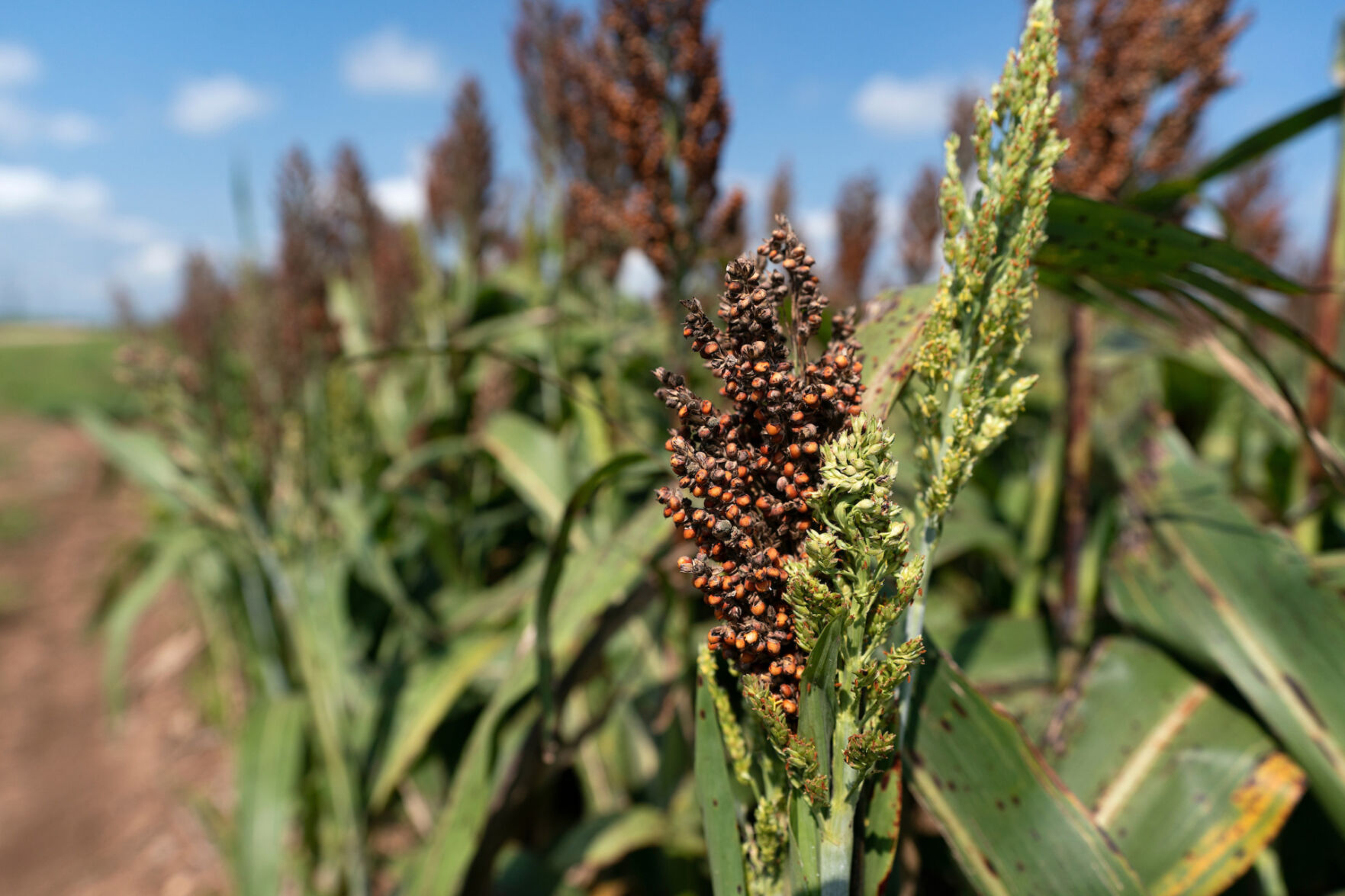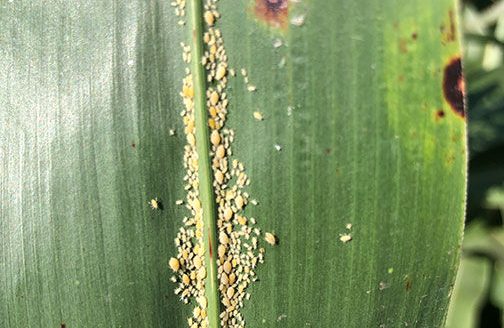The sugarcane aphid, a once devastating pest for sorghum producers, has been kept under control so far during the 2021 season by nature and science.
From the Rio Grande Valley to the Panhandle, Texas A&M AgriLife Extension Service reports show the fight against sugarcane aphids continues to tip in favor of producers. However, they say some producers remain hesitant about planting sorghum after years of severe losses when sugarcane aphids became an annual threat.
Sugarcane aphids devastated grain sorghum after the invasive species was first recognized in Texas crop fields in 2013. Infestations cut yields by 50% to 70% and wiped out entire fields in extreme instances. Aphids also produce a honeydew excretion that inhibited harvest and damaged harvesting equipment.
But 2021 has been a very light-infestation year so far. And while the weather helped, AgriLife Extension experts say scientific breakthroughs with hybrid sorghum plants that are tolerant of the pest and an increased understanding of the aphid and how to manage fields to prevent major infestations continue to show effectiveness.
Danielle Sekula, AgriLife Extension integrated pest management specialist, Weslaco, said the sugarcane aphid migration was set back by Winter Storm Uri in February. Freezing conditions knocked back pest populations and killed early planted sorghum acres in Texas and across the border in Mexico.
Sugarcane aphid populations typically start building in those early planted fields, and pest pressure in South Texas fields begins building by mid-April, Sekula said. This year, sugarcane aphid populations did not begin building until mid-May.
“It’s like the freeze wiped the slate clean,” she said. “We were producing about the same time as the producers in Mexico, so it really reduced the populations and delayed their migration.”
Sorghum varieties, other factors keep sugarcane aphids in check
Sugarcane aphid numbers historically peak in South Texas by the second week in June, but populations did not reach spray thresholds this season until July 13. Rain and cloudy, cooler days also delayed the pests, which prefer high temperatures and humidity, and their migratory progress, Sekula said.
Spray treatments, a strong buildup of beneficial insect numbers and aphid-resistant sorghum varieties contributed to the lighter than usual infestations.
Sekula said pest-resistant hybrids developed after sugarcane aphids arrived and dealt producers serious losses have contributed significantly to below-normal populations. Those varieties continue to show their value as a tool to deter population explosions.
“It was like night and day,” she said. “We saw sugarcane aphids in Johnson grass all around sorghum with resistant varieties, but the fields were empty.”
Texas Plains on high alert
Pat Porter, Ph.D., AgriLife Extension entomologist, Lubbock, said sugarcane aphids are being reported throughout the Texas Plains and north of Amarillo but that numbers have increased slowly. Some fields have been treated, others are being monitored for spray thresholds and some will not require pesticides to prevent the sugarcane aphids from reaching damaging numbers.
Porter said proactive regimens by producers that include timely spraying, encouraging beneficial aphid predators and planting resistant sorghum varieties throughout the pest’s migration have helped keep their numbers in check.
The latest AgriLife Extension Plains Management News by Blayne Reed, AgriLife Extension integrated pest management agent, Hale County, echoes the assessments. He reported receiving two to four calls daily from producers, grain elevator operators, industry representatives and media about the pest and a “very alert” region due to the number of late-maturing grain sorghum acres.
But Reed also noted sugarcane aphids were behaving much more like a common pest now than the once-upon-a-time nightmare for sorghum producers.
Porter said continued success against sugarcane aphids has helped boost sorghum acres, but that acreage remains down due to lingering memories of severe losses from the pest.
“Producers generally know they are there, but we know how to deal with them now,” he said. “They are starting to realize they can plant under the threat of aphids.”




